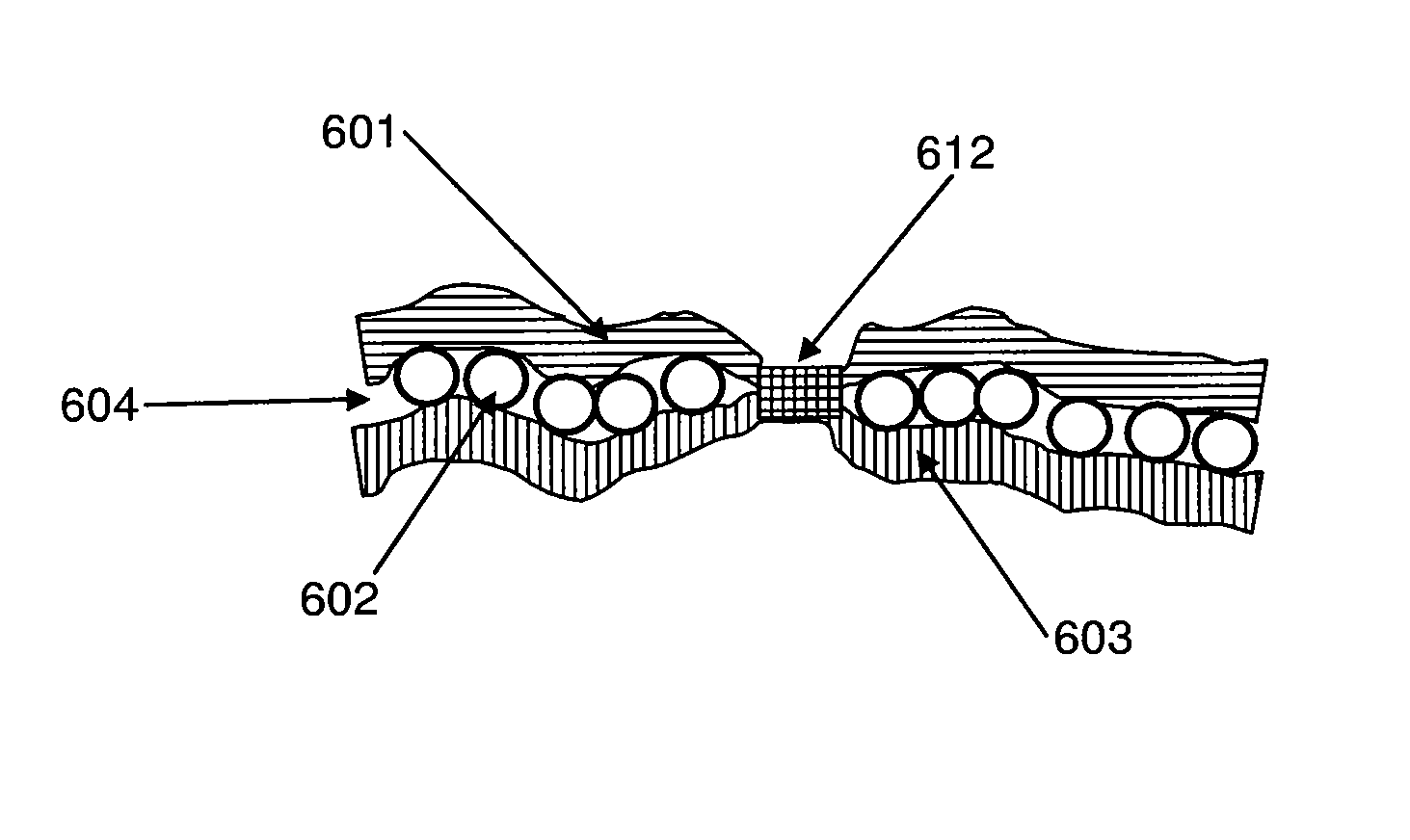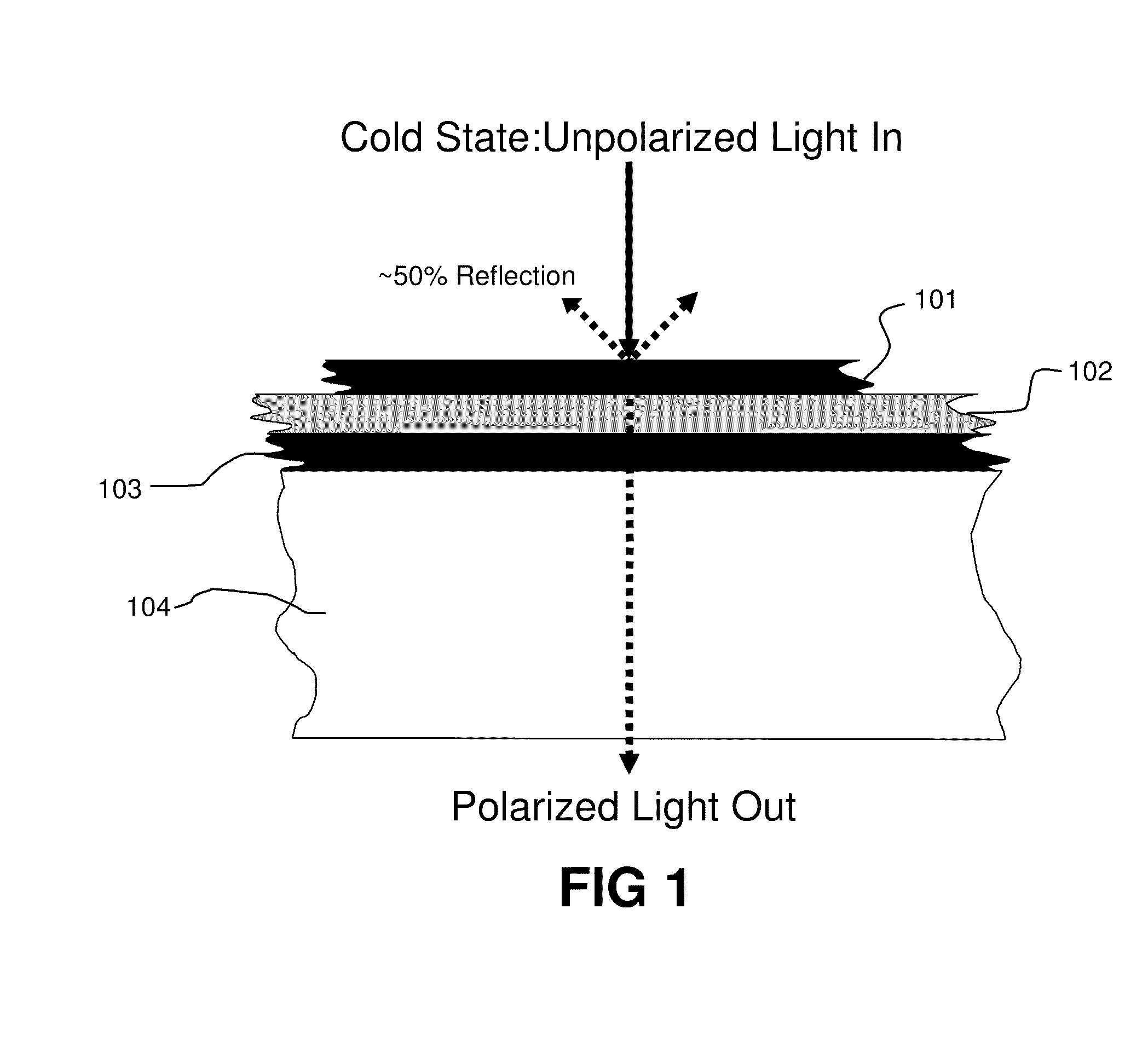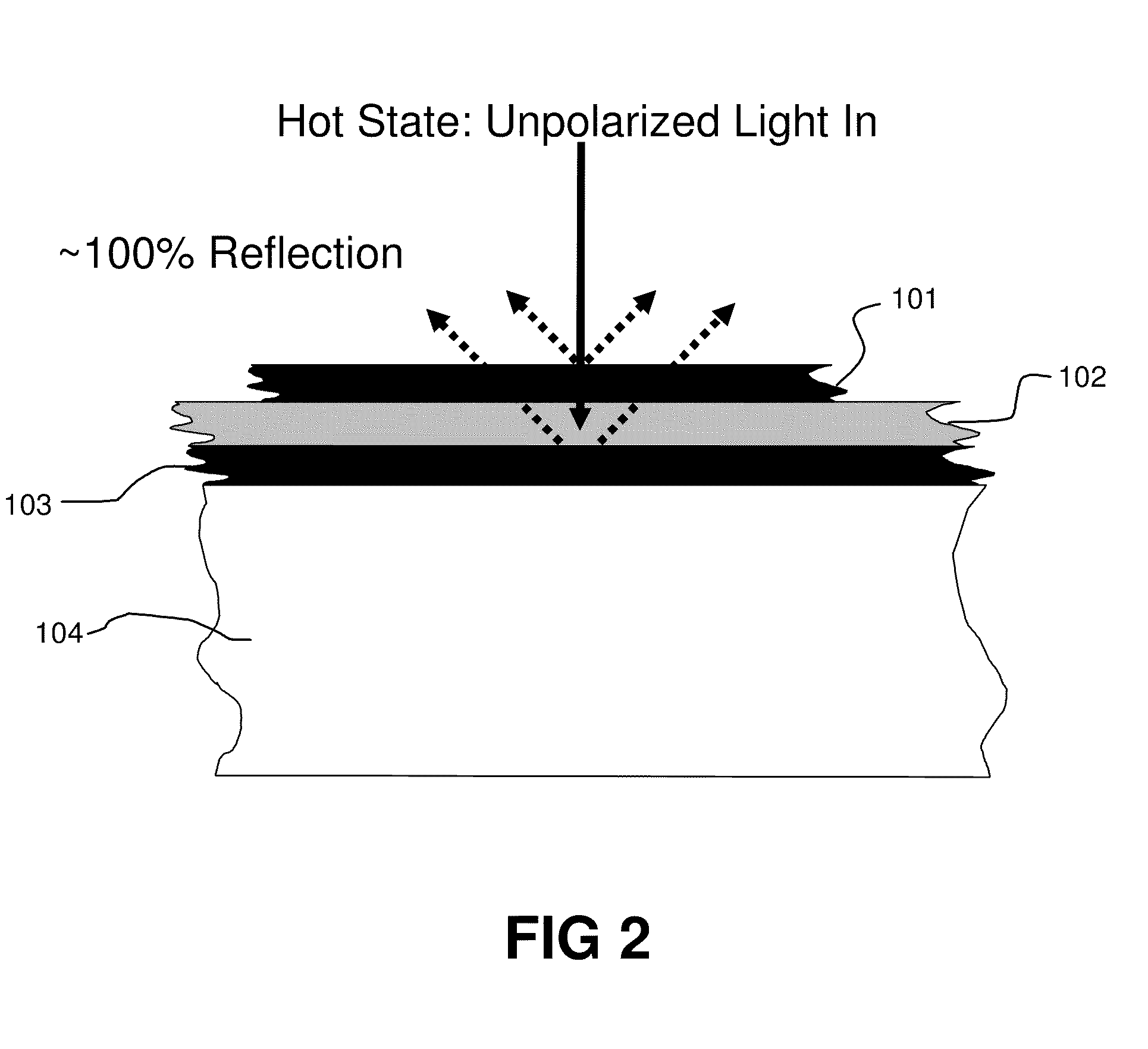Methods for fabricating thermochromic filters
a technology of thermochromic filter and thermochromic spherical filter, which is applied in the direction of instruments, polarising elements, lighting and heating apparatuses, etc., can solve the problems of limited switching speed and cycle lifetime, limited utility of system in temperature-regulating applications, and inability to block unwanted sunlight in cold weather as well as unwanted sunlight, etc., to achieve easy transportation and installation, and less manufacturing costs.
- Summary
- Abstract
- Description
- Claims
- Application Information
AI Technical Summary
Benefits of technology
Problems solved by technology
Method used
Image
Examples
Embodiment Construction
[0044]FIG. 1 is a schematic representation of a thermoreflective filter (laminated to a sheet of glass 104) in its cold or transparent state. When unpolarized light enters the device, it passes through the outer polarizer 101, where up to 50% of it is reflected because it is of perpendicular polarity to the polarizer 101. The remaining light, with the same polarity as the polarizer, is transmitted through into the twisted nematic liquid crystal layer 102, where its polarity is rotated by approximately 90 degrees. The light is therefore able to propagate through the inner polarizer 103, and thus approximately 50% of the incident light is able to pass through the glass substrate 104. Similar principles apply to thermoabsorptive / thermodarkening filters made from absorptive rather than reflective polarizers.
[0045]FIG. 2 is a schematic representation of a thermoreflective filter (laminated to a sheet of glass 104) in its hot or reflective state. When unpolarized light enters the device, ...
PUM
| Property | Measurement | Unit |
|---|---|---|
| thick | aaaaa | aaaaa |
| thermochromic | aaaaa | aaaaa |
| offset polarity | aaaaa | aaaaa |
Abstract
Description
Claims
Application Information
 Login to View More
Login to View More - R&D
- Intellectual Property
- Life Sciences
- Materials
- Tech Scout
- Unparalleled Data Quality
- Higher Quality Content
- 60% Fewer Hallucinations
Browse by: Latest US Patents, China's latest patents, Technical Efficacy Thesaurus, Application Domain, Technology Topic, Popular Technical Reports.
© 2025 PatSnap. All rights reserved.Legal|Privacy policy|Modern Slavery Act Transparency Statement|Sitemap|About US| Contact US: help@patsnap.com



